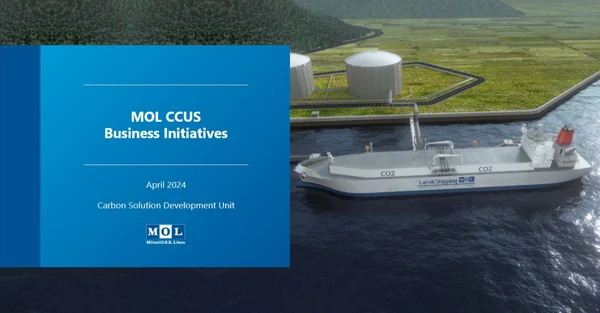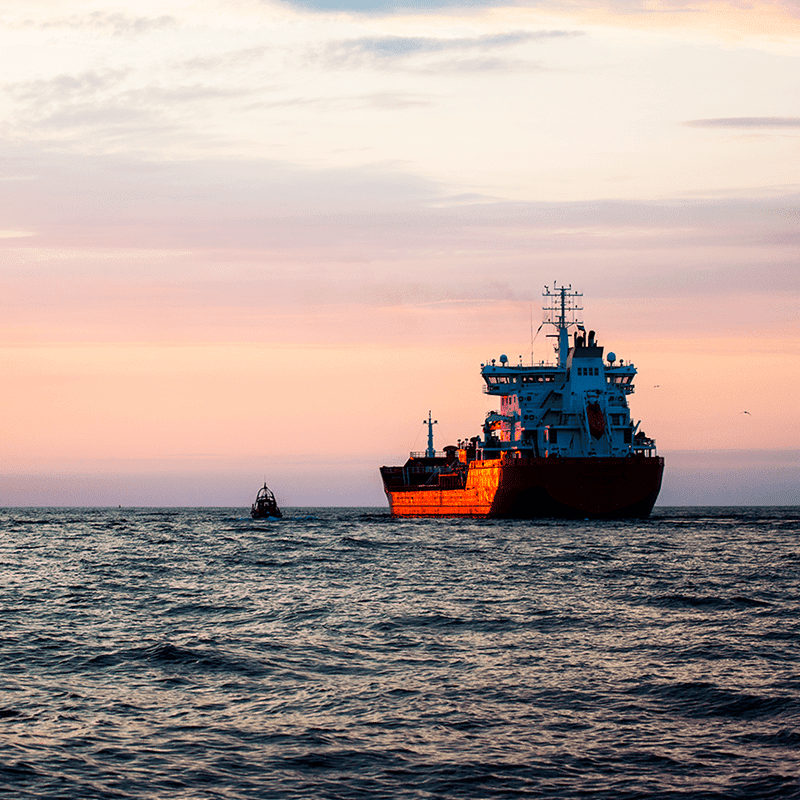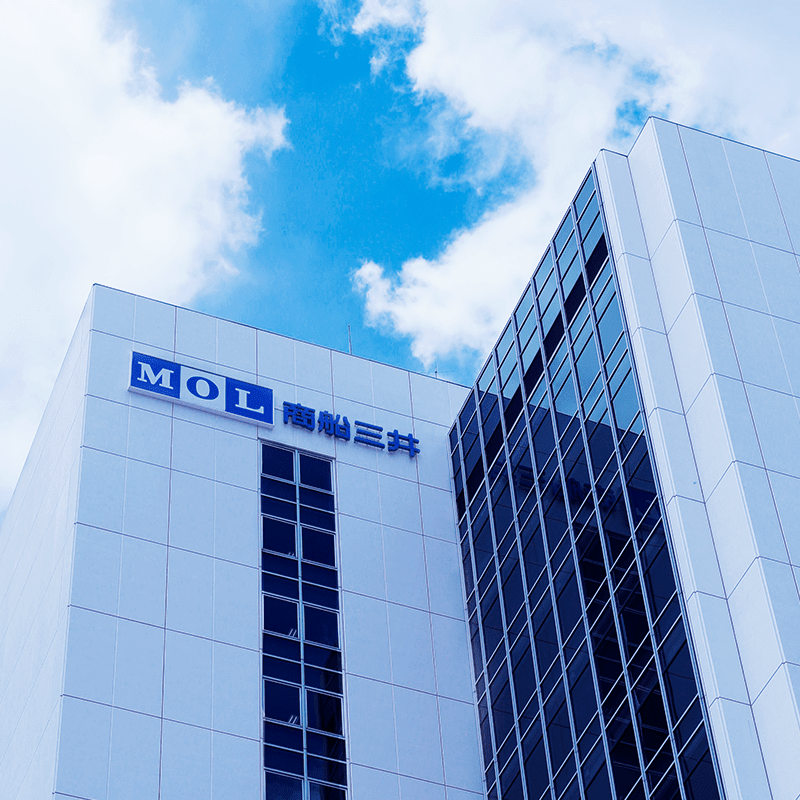BLOG
What Is CCUS? MOL’s Intro to CO₂ Capture, Use, and Transport (Part 1)
- Energy
- Eco Friendly
- General Shipping
2025.10.14
Reducing CO₂ emissions —widely recognized as a major contributor to global warming— has become an urgent global challenge. Around the world, efforts are accelerating to achieve carbon neutrality, and among the various approaches, one gaining significant attention is CCUS (Carbon Capture, Utilization and Storage).
In this two-part blog series, we will explore the fundamentals of CCUS, highlight initiatives in Japan and abroad, and introduce related projects within our company. In this first installment, we will cover four key points that provide essential background on the current state of CO₂ emissions and the basic concepts behind CCUS.
Key Points
- CCUS (Carbon Capture, Utilization, and Storage) is gaining attention as a key technology for decarbonization.
- As global CO₂ levels continue to rise and natural absorption decreases, climate change is accelerating.
- At COP28, the international community agreed to phase out fossil fuels and promote CCUS.
- Liquefying CO₂ significantly reduces its volume, enabling large-scale CO₂ transport by ship.
- Currently, most CO₂ shipping uses medium-temperature / medium-pressure, but low-temperature / low-pressure transport is expected to be used for larger-scale decarbonization.
Rising Atmospheric CO₂ Concentrations Year by Year
Approximately half of the CO₂ emitted through human activities remains in the atmosphere, while the rest is absorbed by the oceans and terrestrial ecosystems. As such, the concentration of residual CO₂ in the atmosphere serves as a critical indicator of the balance between sources and sinks.
The absorption process of CO₂ is highly sensitive to changes in climate and land use. For example, prolonged climate change can lead to increased droughts and wildfires, which may reduce the capacity of terrestrial ecosystems to absorb CO₂. Similarly, rising sea surface temperatures, declining pH levels due to CO₂ absorption, and increased melting of sea ice can weaken oceanic circulation, potentially decreasing the ocean’s ability to absorb CO₂. In other words, the increase in extreme weather events —partly driven by global warming— may reduce the CO₂ absorption capacity of both land and ocean ecosystems, creating a vicious cycle that further accelerates climate change.
Therefore, changes in terrestrial and marine ecosystems play a significant role in achieving the goals of the Paris Agreement*1, which aims to “keep the global temperature rise well below 2℃ above pre-industrial levels and pursue efforts to limit the increase to 1.5℃.” Despite growing concerns over rising atmospheric CO₂, its concentration continues to increase.
According to the latest data released by the World Meteorological Organization (WMO), the global average concentration of major greenhouse gases in the atmosphere reached record highs again in 2023. CO₂ levels have been rising almost consistently since analysis began in 1984, with the pace accelerating over the past decade. As climate change makes wildfires more frequent —leading to increased CO₂ emissions— and ocean warming reduces CO₂ absorption, the WMO has expressed concern that “global warming may accelerate.”

Yearly Trends in Global Average Atmospheric CO₂ Concentration (Source:The World Data Centre for Greenhouse Gases (WDCGG))
As it stands, the goals set forth in the Paris Agreement are becoming increasingly difficult to achieve. However, this sense of urgency is shared globally, and progress is indeed being made. One notable milestone was the COP28 conference held in Dubai in November–December 2023, where a major breakthrough was reached: a global agreement on energy transition aimed at realizing the 1.5℃ target.
Specifically, the agreement calls for a “transition away” from fossil fuels, a tripling of renewable energy capacity by 2030, and a doubling of energy efficiency improvement rates. The explicit mention of moving away from fossil fuels —widely recognized as the primary driver of rising CO₂ emissions— marked a significant step forward.
This was especially notable given the outcome of COP26 in 2021, where opposition from oil-producing countries, as well as India and China, led to a watered-down commitment using the phrase “phase down” of fossil fuels. In contrast, COP28 clearly emphasized the shift away from fossil fuels, while also incorporating the use of new energy sources such as renewables and decarbonization technologies such as CCUS/CCS into the global strategy.
(*1)
The legal framework for climate change issues after 2020, adopted at COP21 held in Paris, France in 2015.
CCS/CCUS: The Key to Reducing Atmospheric CO₂
In October 2020, the Government of Japan declared its commitment to achieving a decarbonized society by aiming for net-zero greenhouse gas emissions by 2050 —a goal known as Carbon Neutrality by 2050. Further strengthening this stance, in April 2021, Japan announced its target to reduce greenhouse gas emissions by 46% by fiscal year 2030 compared to 2013 levels, while also expressing its determination to continue striving toward a 50% reduction.

One of the primary uses of fossil fuels such as oil and coal is thermal power generation, which converts these fuels into energy. However, because thermal power plants emit large amounts of CO₂, transitioning to cleaner energy sources is highly desirable. That said, thermal power remains an essential energy source for ensuring a stable power supply, as it can generate electricity quickly, affordably, and without being affected by weather conditions. For this reason, an immediate shift away from thermal power is not a realistic option.
To address this challenge, various efforts are underway to reduce CO₂ emissions from thermal power generation—a process known as decarbonization. One such initiative is CCS (Carbon Capture and Storage). This technology involves separating and capturing CO₂ from emitted gases, then injecting and storing it deep underground to prevent it from entering the atmosphere.

Source : Ministry of the Environment Government of Japan
Additionally, growing attention is being paid to CCUS (Carbon Capture, Utilization and Storage) —an expanded concept of CCS that incorporates the “utilization” of captured CO₂.
The CCUS process can be broadly divided into the following three steps:
- 1. Separation and capture of CO₂ from exhaust gases emitted by various factories and industrial plants.
2. Transportation of the captured CO₂ via pipelines, tank trucks, ships, or railways.
3. Storage or utilization of the transported CO₂ —either by injecting it into underground or subsea geological formations, such as depleted oil fields (CCS), or by reusing it as a raw material for industrial applications (CCU).
Understanding the Properties of CO₂: A Key to CCS/CCUS
So how exactly is CO₂ captured, stored, and injected underground? To understand these processes, it is essential to first grasp the physical properties of CO₂. CO₂ is a colorless, odorless, and non-flammable gas that exists in gaseous form under standard atmospheric pressure (0.1013 MPa). When cooled to −78.5℃ at normal pressure, CO₂ does not become a liquid —instead, it turns into a white solid known as dry ice. As a result, dry ice placed in the open air quickly sublimates back into gas.
This direct transition between gas and solid (and vice versa) is called sublimation, and it is a unique characteristic of CO₂ under atmospheric conditions —it does not become a liquid in open air. However, under specific combinations of pressure and temperature, CO₂ can exist in liquid form.
To better understand how CO₂ is captured, stored, and injected in CCS/CCUS systems, it is helpful to explore its physical characteristics in more detail:
- 1. CO₂ does not exist in liquid form at atmospheric pressure (0.1013 MPa).
2. CO₂ gas can be liquefied by compression and cooling. However, if the temperature exceeds 31.1℃, it cannot be liquefied regardless of the pressure applied. This temperature is known as the critical temperature. At 31.1℃, the pressure required to begin liquefaction is 7.382 MPa, referred to as the critical pressure.
3. Liquid CO₂ becomes solid (dry ice) when further cooled to −56.6℃ at a pressure of 0.518 MPa.
4. The point at which gas, liquid, and solid phases coexist is called the triple point. For CO₂, this occurs at −56.6℃ and 0.518 MPa. Dry ice sublimates directly into gas under pressures below the triple point, meaning liquid CO₂ cannot exist below 0.518 MPa.
5. CO₂ is colorless, odorless, and non-flammable. When dissolved in water, it becomes weakly acidic and can corrode metals. In its liquid state, CO₂ is clear and transparent, while in solid form (dry ice) it appears translucent and milky white.
6. The density of liquefied CO₂ is approximately 1.030 kg/L at −20℃ and 1.967 MPa. This is nearly twice as heavy as liquefied propane (0.582 kg/L) or liquefied natural gas (LNG, 0.46 kg/L).
When visualized in a pressure-temperature graph, these properties show that CO₂ can be transported in liquid form under the conditions shaded in blue—where both pressure and temperature are carefully controlled.
Carbon dioxide pressure-temperature phase diagram(Source: Wikipedia)
Transporting CO₂ by Ship
So how is CO₂ transported?
While pipeline transport in gaseous form is one method, liquefying CO₂ offers a major advantage —it significantly reduces its volume. In fact, liquid CO₂ occupies just 1/550th the volume of its gaseous form. For transporting large quantities of CO₂ over long distances (typically 200–300 km or more), marine transport in liquid form is considered the most efficient and optimal solution.
In Europe, small-scale liquefied CO₂ shipping is already being practiced. These operations involve transporting CO₂ —primarily for use in food and beverage applications— from emission sources to coastal distribution hubs.
 Illustrative Image of an LCO₂ Carrier (Source: Company Press Release)
Illustrative Image of an LCO₂ Carrier (Source: Company Press Release)
Currently, all commercial CO₂ marine transport operations adopt medium-temperature and medium-pressure conditions—typically 15–18 bar (bar≒0.1013MPa) and around −25℃. There are no commercial records yet of CO₂ transport under low-temperature/low-pressure conditions (6–8 bar, approximately −50℃) or normal-temperature/high-pressure conditions (40–60 bar, approximately 20℃).
The reason medium-temperature/medium-pressure conditions are preferred lies in the pressure resistance of cargo tanks used for liquefied CO₂ transport. Liquefying CO₂ requires applying high pressure to the tank, based on the physical properties of CO₂ described earlier. Therefore, tanks must be constructed with thick steel plates to withstand this pressure. Under normal-temperature/high-pressure conditions, the required plate thickness increases significantly, making the tanks heavier and ultimately limiting transport capacity.
On the other hand, low-temperature/low-pressure conditions pose a different challenge: the risk of dry ice formation. Since the temperature and pressure approach CO₂’s triple point, there is a higher risk of dry ice forming during transport —especially during loading and unloading. If dry ice forms, it can lead to pipe blockages or damage to cargo tanks. Given these factors, medium-temperature/medium-pressure conditions remain the only commercially proven method for CO₂ marine transport. However, low-temperature/low-pressure conditions offer a potential advantage: tanks can be built with thinner steel plates, allowing for larger vessel designs. As a result, this method is expected to be suitable for large-scale transport projects in the future.
This concludes Part 1. In Part 2, we will explore real-world CCS/CCUS initiatives, including the current landscape in the United States —a global leader in this field— and introduce projects our company is actively investing in.
Recommended Articles
2022.07.05
- General Shipping
2021.04.13
- Energy
2023.12.19
- General Shipping
2021.08.07
- Eco Friendly
2025.03.18
- General Shipping
Latest Articles
2025.11.20
- Energy
- General Shipping
2025.11.11
- General Shipping
2025.10.28
- Energy
- Eco Friendly
- General Shipping









